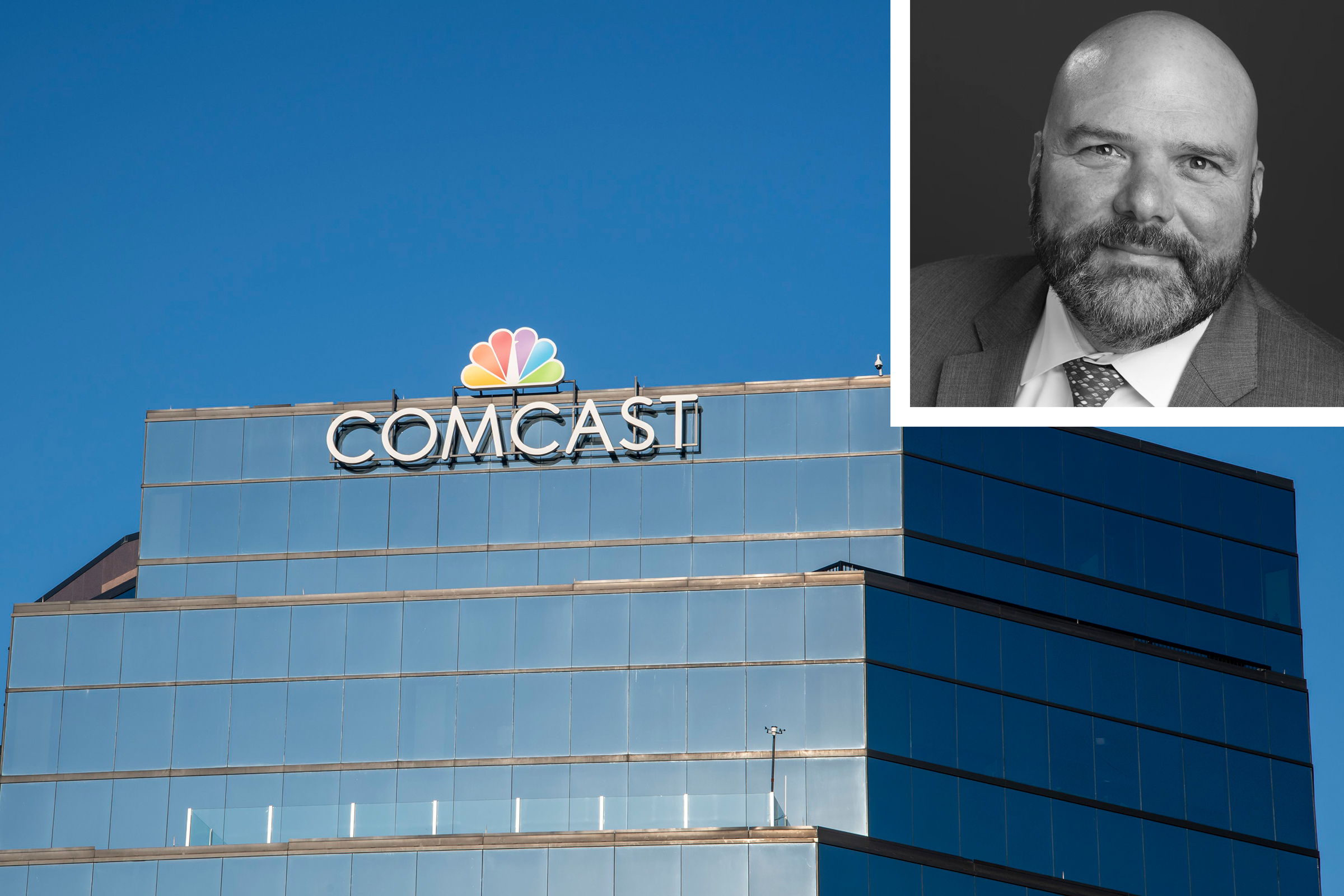When David Tashjian first joined Comcast as a director of sales in 2004, broadband Internet was a novelty, something that the company hoped around 10% of cable customers would buy as an add-on to video service.
In an interview, Tashjian recalled the internet of his early career as a “box”—a physical product sold in stores. Customers with a modem plugged a cable into their walls to get online, hoping for speeds that might reach 3 megabits per second. “It really was a bit of building the plane while you’re in the air because we were facing new competition from the [telephone companies], even as we were trying to grow our broadband and hold onto our video base,” Tashjian said.
Much has changed in the 19 years since then. Tashjian has newly returned to his home state last year after living in 18 different cities over nearly three decades. And for millions of people, the Internet is no longer a novelty; it’s a daily necessity.
That life without reliable high-speed broadband seems unimaginable reflects how deeply woven internet access has become into work, education, health care, entertainment, and civic participation, especially in our post-pandemic world. As for Comcast, domestic broadband has moved from an add-on into a $24 billion-a-year business that continues to grow. “We connect people to what’s important, period,” Tashjian said.
In his new role, Tashjian is charged with strengthening Comcast’s foothold in a highly competitive, tech-savvy market, starting with the company’s new 10G Broadband Initiative.
While the term “10G” might suggest a successor to “4G” and “5G,” it’s actually unrelated: The “G” in “5G” refers to “generation,” while Comcast’s 10G catchphrase refers to its goal of delivering residential internet speeds of up to 10 gigabits per second. This is over 10 times faster than its fastest residential service now and involves a series of infrastructure improvements—both extending fiber closer to homes and replacing analog parts with fully digital systems.
There are auxiliary benefits to this transition. “We are using about a 10th of the space and energy for a digital component in our network operation centers, compared to the old analog parts,” Tashjian said. Internally, the company has committed to sustainability efforts that aim to maintain or decrease its energy footprint, even as Moore’s Law creates ever more demanding machines.
Digitization also grants Comcast unprecedented visibility into its network, allowing its technicians to use software to automatically monitor and quickly find the root cause of issues. “Today, if there’s a problem, all we know is that there’s a fiber cut somewhere,” Tashjian said. “Sometimes, we literally need to drive around the area to visually examine the lines to determine precisely where the cut occurred. Sometimes, we have technicians on the phone with local police and municipalities to figure things out together because we know something damaged our lines, but we cannot pinpoint it without additional insights.”
The net result is hopefully faster Internet speeds, improved reliability and the ability to connect many more devices at once—important especially as consumption increases. “I have two young children at home, a couple of brand new appliances, refrigerator, dishwasher, plus the two or three game consoles and a television—so I have about 37 connected devices,” Tashjian said. “By having the more reliable network, what Comcast calls ‘the brilliant network,’ all those devices are going to have plenty of speed and capacity.”
Tashjian contrasts this with fixed wireless networks, which are currently able to handle at most a few devices at once, or where you can feel a noticeable lag when playing real-time games like Grand Theft Auto. At the end of the day, “what customers want is reliability,” Tashjian said, “That’s the No. 1 thing that they want. And we are hyper-focused on delivering that.”
Part of the challenge of Tashjian’s new role is that internet service is a fairly sticky product—users generally choose a new provider if and when they move and will stay with that provider unless the service is particularly egregious. Over 50% of Comcast’s customer activity, for example, comes from residential moves—meaning much of its growth depends on providing a seamless experience for customers relocating.
Beyond moves, Comcast sees an opportunity to expand to underserved areas. “We’re looking at literally hundreds of thousands of passings in California that are unserved or underserved,” Tashjian said. Areas like Planada, in Merced County, near Fresno, for example, currently have no material broadband—only dial-up type service. Comcast recently announced plans to invest $4.5 million to bring its Xfinity 10 Network, which provides multi-gigabit speeds, to the highly diverse rural community.
In fact, part of the promise of 10G is bridging the digital divide. “We try to be ubiquitous with what we offer today. … Our entire footprint will be 10G capable over time,” Tashjian said.
For Tashjian, serving the underserved and giving back is fundamental to his mindset, leadership style, and personal mission. “I’m an unlikely executive,” Tashjian said. “I didn’t get a traditional college education. I came up through food service and retail. I got here through a ton of hard work but also because folks saw my work ethic and provided access to opportunities. So now it’s my turn to give back, and I take that commitment very seriously.”

